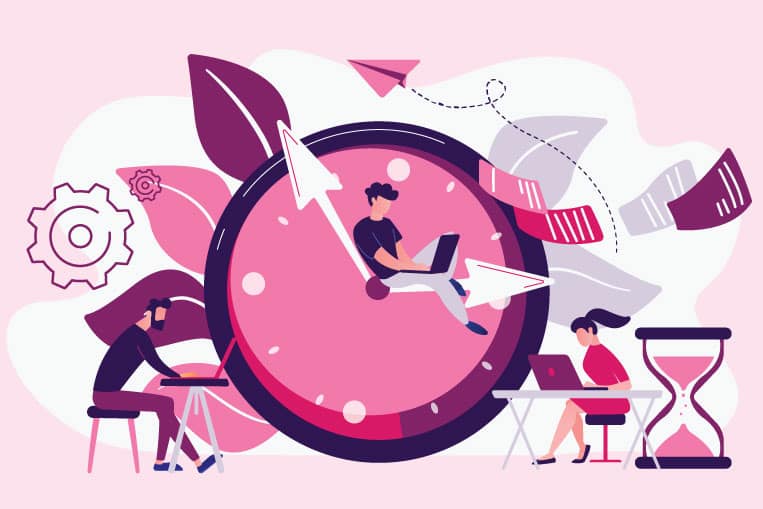How do you feel when you’ve spent weeks preparing to launch a product or campaign and your results fall flat?
We all wish we had a magic tool that could generate sales immediately after launching an ad campaign.
But let’s face it — advertising takes time.
Without understanding the ad stages, user journey, and purchase behavior of customers, this time thing can feel longer.
Advertising is a long game and in this blog, we will tell you why, along with what you can do to shorten it.
1. Competition
Growing competition is the biggest reason why advertising is becoming more expensive and takes more time for your ads to deliver the desired results.
More competition means sellers are bidding more for keywords and products selling the most. At times, this means less bang for your buck leading to fewer clicks, hence, slower sales.
If you get more clicks but fewer conversions, you incur a high Cost per Action (CPA). These higher costs mean you’re able to test fewer things taking longer to find a reliable source of ROI.
Ultimately, you have to find new ways to beat your competition. Some places to start include optimizing keywords, nailing A+ content, or trying different bidding strategies that work around the barriers your established competition has put up for you.
The more diligently you adapt to your data, the more profitable your keywords and campaigns will be.
2. Data
Data is the new raw material in the information age.
In digital retail, data on keywords, competitors, and their purchase behavior can put you way ahead of the competition. And to get those insights, your campaigns need time to run and gather enough data.
Performance and historical data help identify the right audience with the right keywords using various metrics and data points. But the information gathering takes time which is usually relative to the ad spend.
Once you have the output, you need to analyze it and find meaning, which would take more time.
3. Expertise
Too much data can give you many problems too if you don’t know how to analyze them.
Thoroughly analyzing past performance requires a specialist. Anyone can learn and do it, but an expert would expedite the learning and experimentation phase saving you a lot of time and ad spend.
A specialist deeply understands the buying stages of the customer, and how to use that knowledge to get the best results. Understanding the intent and behavior of customers can better align your ads with your marketing goals for each stage: awareness, consideration, and conversion.
When it comes to different advertising platforms such as Google Shopping, Walmart, and Amazon, the fundamentals remain the same, but each has its own nuances and learning curves.
4. Strategy
Getting the right specialist doesn’t mean they are always enabling the right strategy. There will be hits and misses — some work, while others flop.
Many advertisers fail to set a rock-solid strategy. Either they don’t understand the stages of ad maturity and user journey of the particular industry, category, or product — or human bias gets in the way.
There are a few strategic elements that take time to flush out when first starting an advertising campaign: products, content, and targeting.
There are several factors to consider before launching your products. You need to decide on which products to sell, where to sell them, and how you want to price them – among many other things. All of these variables are important to decide on before starting and once you do, they take more time to evaluate and build off of.
When creating content to support your launch, you need to think about titles, descriptions, images, A+ content, and more. Working through these elements to position your brand appropriately in itself takes time. Then landing on the best combination of content can take even longer.
Your targeting strategy is also something that gets refined as you go. Initially, you can start with the keywords that you believe to be your “lowest hanging fruit,” yet with competition and data, you can often find that they are over-saturated and expensive. However, by setting up your campaign with things like Broad Match keywords you will naturally explore new opportunities.
Ultimately, these components start with a “best bet” and need to be built off of data and by further understanding your industry’s context through A/B testing.
5. A/B Testing
To create a solid a/b testing strategy, you need a Crawl, Walk & Run Methodology.
When beginning, you start off in the Crawling stage. You roll out your best bets and monitor your competitiveness. Starting with:
- Budgets,
- Keywords,
- Bids,
- Content,
- And pricing.
You establish some benchmarks and begin the Walking stage. You start testing and optimizing your ads.
Best optimizations result from the outcomes of your A/B tests. To perfect your campaign, you may require a lot of tweaks based on the following components:
- Landing pages
- Headlines
- Ad copy
- Campaigns and ad groups
- Keyword sets
- Bids for top-performing markets
After a few weeks or months, your campaigns will start to show some progression. But it would take some time for data to be analyzed, with the right strategy, and testing the right data points.
As your campaign becomes more optimized, you start seeing the desired results and trends. Then you can crank up your budget and let your winners run. That would be the Running stage.
6. Automation
The biggest eCommerce sellers use some sort of automation to expedite the ad campaign process. It enables them to get answers quickly to big questions including:
- What is the purchase behavior for my products/categories?
- What are the most converting keywords?
- What products are bringing the most profit/sales?
- What products are creating the most brand awareness?
If you are not already automating your Crawl, Walk, Run stages, then you might be way behind the competition. And that is the reason your ads are taking relatively more time than your competitors.
Robust automation tools save you time and money by offering a range of auto and optimization controls for bids, keywords, prices, and content. Such controls allow you to adapt to market dynamics quickly and beat the competition.
But then how long does it take?
Well, the answer depends on your budget, competition, and strategy. But general consensus is that a pay-per-click (PPC) takes three months to deliver results. As said, the algorithms must gather data, learn from it, and start firing.
You may also need to factor in the time your platform takes to evaluate your ads campaign before letting it run freely (the “warm up” period).
For Amazon ad campaigns, it could take about eight weeks till positive results start showing. After that, you can begin optimizing and testing your ads for more refined results.
When should you kill your ad campaigns?
After launching your campaign, you might be tempted to switch them off when it isn’t delivering results. But it’s recommended to let it run unless switching off is necessary.
Experts prefer longer campaigns to give them enough time to gather data. But some situations might force you to pause or kill them:
- The campaign’s ad spend exceeds your budget
- Increasing Advertising Cost of Sale (ACoS)
- Out-of-season products
While all these reasons are valid, each comes with its nuance. A long-term vision and informed judgment will help you determine the best course of action.
So, how can you quicken your ad performance?
Despite doing your best, results take time to trickle in.
An excellent rule of thumb is to give your account at least three months to hit its stride.
The trick is to set realistic expectations: Crawl, walk, and then run. Put your competition behind by employing automation tools run and A/B tested by the experts.
That’s where Trellis offers a partnership!
Talk to us about your goals, expectations, and strategies and see if they can be met through our platform.



